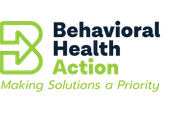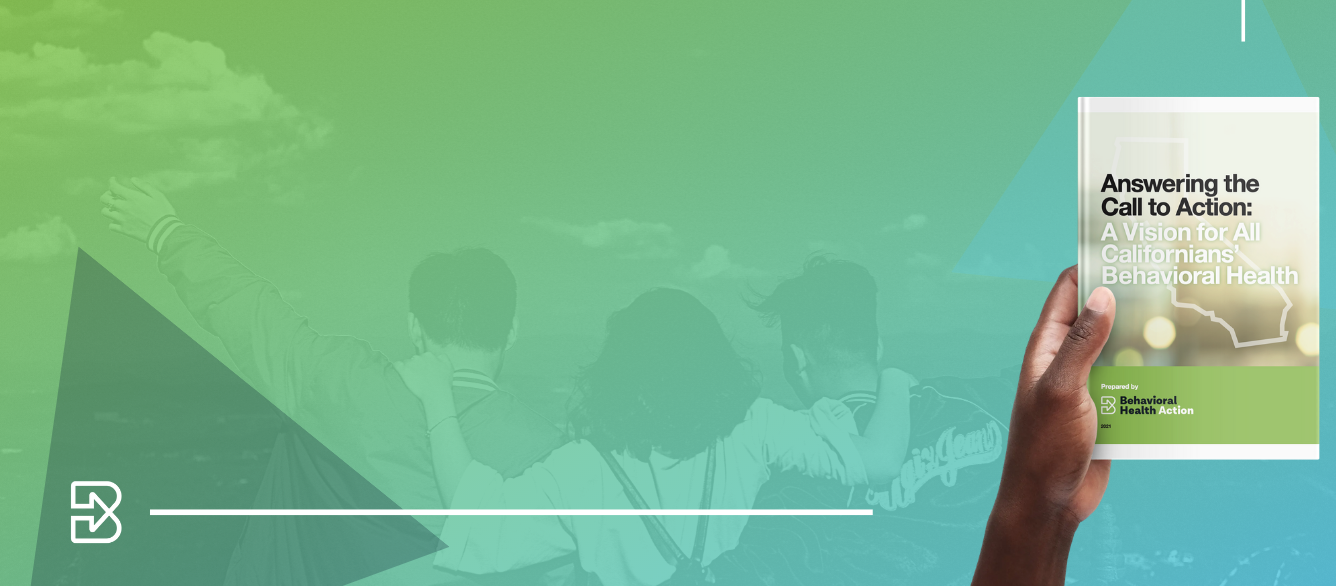Detect and Link
Complementary to the previous section on prevention, screening at the individual level to identify risk factors and then intervening can have long-lasting benefits. Services should be offered as early as possible to children, youth, and adults who are at risk or are showing early signs of a behavioral health need. Intervening early (before high school) is critical, given that patterns of substance abuse become worse in the high school years and individuals who begin using alcohol or tobacco when they are very young are more likely to abuse them later in life, when it becomes much more difficult to quit.[i]
Half of all cases of mental illness begin by age 14, and 75% by age 24. Sometimes decades elapse, unnecessarily, between the first appearance of symptoms and when people get help. According to the National Institute of Mental Health, the average delay between onset of symptoms and intervention is between eight and 10 years.[ii]
Trauma can have lasting impacts that affect behavioral health and well-being. A recent study of the impacts of trauma found that childhood trauma is associated with a two- to threefold increase in risk of psychotic experiences.[iii] Furthermore, trauma that involves neglect or interpersonal violence appears to be associated with a greater risk of psychotic experiences compared with exposure to unintentional injury, parental loss, or economic adversity. Adolescence is the time when exposure to trauma is most strongly associated with risk of psychotic experiences. According to the World Health Organization, severe mental health disorders often result in increased risk of poverty, unemployment, social isolation, and social stigma. These factors can increase psychological stress and unhealthy behaviors (such as smoking), which in turn increase the risk of chronic illness.
SCREEN TO DETECT RISKS, TRAUMA, AND EARLY SIGNS
Substance Misuse
The U.S. Surgeon General’s 2016 report on substance use disorders states:[iv] “Because substance misuse has traditionally been seen as a social or criminal problem, prevention services were not typically considered a responsibility of health care systems and people needing care for substance use disorders have had access to only a limited range of treatment options that were generally not covered by insurance. Effective integration of prevention, treatment, and recovery services across health care systems is key to addressing substance misuse and its consequences and it represents the most promising way to improve access to and quality of treatment.”
Unhealthy Alcohol Use
Excessive alcohol use is one of the most common causes of premature mortality in the United States; in fact, unhealthy alcohol use is the third-leading preventable cause of death in the United States. Alcohol use during pregnancy is also one of the major preventable causes of birth defects and developmental disabilities.[v] These alarming figures present an immense opportunity for California to educate the public, screen individuals of all ages, and provide interventions and referrals at the earliest possible time.
The U.S. Preventive Services Task Force (USPSTF) recommends screening for unhealthy alcohol use in primary care settings in adults 18 or older, including pregnant women, and providing persons engaged in risky or hazardous drinking with brief behavioral counseling interventions to reduce unhealthy alcohol use. The U.S. Surgeon General, Centers for Disease Control and Prevention, and American Society for Addiction Medicine (ASAM) all recommend routinely screening adults for unhealthy alcohol use and providing them with appropriate interventions, if needed.[vi] ASAM and the American College of Preventative Medicine urge all insurers to cover services that target early detection of and intervention for substance use and to do so without burdensome utilization management oversight.[vii]
Depression
Depression is now the leading cause of disability worldwide. For children and adolescents with depression, difficulties in performance at school and in interactions with families and peers is common. Additionally, major depressive disorder in children and adolescents is strongly associated with recurrent depression in adulthood, other mental health disorders, and increased risk of suicide.[viii]
The USPSTF recommends screening for depression in the general adult population, including pregnant and postpartum women, citing convincing evidence that treatment using antidepressants, psychotherapy, or both decreases clinical morbidity.[ix] Furthermore, USPSTF recommends depression screening in ages 12 to 18 years. The American Academy of Pediatrics’ Bright Futures program recommends annual screening in child and adolescent patients for emotional and behavioral problems. Medicaid’s child health component, the Early and Periodic Screening, Diagnosis, and Treatment (EPSDT) program, recommends screening to detect physical and mental conditions at periodic, age-appropriate intervals and — if risk is identified — follow up with diagnostic and treatment coverage.
Early Psychosis
Early treatment for adolescents and young adults displaying early symptoms of psychosis increases their chances of a successful recovery and can avert other psychotic episodes from occurring altogether. These signs include, for example, a worrisome drop in grades or job performance, new trouble thinking clearly or concentrating, suspiciousness, paranoid ideas or uneasiness with others, or withdrawing socially. The National Institute of Mental Health reports that “studies have shown that many people experiencing first episode psychosis in the United States typically have symptoms for more than a year before receiving treatment. It is important to reduce this duration of untreated psychosis because people tend to do better when they receive effective treatment as early as possible.”[x] While numerous programs have been shown through rigorous research to be effective, they are not widely available in California. About half the counties have early psychosis programs available to their residents that are typically funded by the Mental Health Services Act; commercial coverage of early psychosis intervention services varies widely.[xi]
Trauma and Adverse Childhood Experiences
Trauma-informed screenings for mental health, alcohol, and other substance use concerns for all children, adolescents, and adults with referrals to treatment when needed. Screenings for children and youth should begin early, including during routine pediatrician well-child visits. Screening and identification should also include children’s parents, as behavioral health conditions among parents have been shown to increase risk in children.
Screening for adverse childhood experiences (ACEs) should be widely conducted. ACEs describe 10 categories of adversities in three domains (abuse, neglect, household challenges) that individuals may experience by age 18 that can have a long-standing impact on their health and well-being. While protective factors (e.g., trusted and nurturing caregivers, safe and stable environment) can reduce their likelihood, ACEs can trigger toxic stress in the body and affect brain development, hormone and immune systems, and genetic regulatory systems.
The U.S. Centers for Disease Control and Prevention acknowledges that ACEs are common and are associ- ated with many poor health and life outcomes in adulthood. ACEs, such as violence victimization, substance misuse in the household, or witnessing intimate partner violence, have been linked to leading causes of adult morbidity and mortality. Therefore, reducing ACEs is critical to avoiding multiple negative health and socioeconomic outcomes in adulthood. Leading researchers on ACEs and trauma have found:[xii]
“Exposure to (ACEs) can be traumatic, evoking toxic stress responses that have immediate and long- term adverse physiologic and psychologic impacts. These (experiences) can derail optimal health and development by altering gene expression, brain connectivity and function, immune system function, and organ function. (ACEs) can also compromise development of healthy coping strategies, which can affect health behaviors, physical and mental health, life opportunities, and premature death. (ACEs) have been linked to increased risk for alcohol and substance use disorders, suicide, mental health conditions, heart disease, other chronic illnesses, and health risk behaviors throughout life. (ACEs) have also been linked to reduced educational attainment, employment, and income, which directly and indirectly affect health and well-being. At least five of the 10 leading causes of death have been associated with exposure to adverse childhood experiences, including several contributors to declines in life expectancy.”
Once trauma and/or ACEs are identified, providing appropriate support and treatment can lower long-term health costs and support individual and family wellness and healing.[xiii] Over the past year, California’s Surgeon General, Nadine Burke Harris, MD, and the California Department of Health Care Services (DHCS) have launched the “ACEs Aware” initiative, which includes paying Medi-Cal providers to screen all Medi-Cal enrollees for ACEs .
LINK AND REFER TO SUPPORT, SELF-HELP, AND COUNSELING
Once risk factors are detected or screenings reveal the presence of a mental health problem or substance use disorder, it is critical that care providers take swift action.
With children and youth, efforts must include the active engagement of their parents and caregivers. Effective school and community support models, such as high school wellness centers, school-based health centers, on-site school counseling staff, and drop-in centers, can also reach youth as mental health needs arise and prevent them from worsening — particularly for children who have experienced trauma. To ensure a low barrier of access to care, behavioral health services should be fully considered at all points throughout health care systems, particularly in primary care where issues can be discovered early, and interventions can begin early. Additionally, supports to prevent relapse among individuals in recovery from a substance use disorder, such as self-help groups, can prevent the need for higher levels of service.
There is also increasing evidence of the effectiveness of behavioral health interventions delivered by non- specialists in community platforms delivered outside primary care or health care settings. Non-specialist could include leaders of social/recreational venues, libraries, self-help groups, faith-based organizations as well as technology-aided delivery where individuals may have better accessibility, acceptability, affordability, and scalability of services compared to health care facilities. Activities could include awareness raising, psychoeducation, and skills training. Moreover, community services can play a crucial role in promoting mental health awareness, reducing stigma and discrimination, supporting recovery, and social inclusion.
Citations:
[i] Youth.gov, “Substance Abuse Prevention,” https://youth.gov/youth-topics/substance-abuse/evidence-based-programs-youth-sub- stance-abuse-prevention-and-treatment
[ii] Croft J, Heron J, Teufel C, et al, “Association of Trauma Type, Age of Exposure, and Frequency in Childhood and Adolescence with Psy- chotic Experiences in Early Adulthood,” JAMA Psychiatry 2019; 76(1): 79–86. doi:10.1001/jamapsychiatry.2018.3155
[iii] Croft J, Heron J, Teufel C, et al, “Association of Trauma Type, Age of Exposure, and Frequency in Childhood and Adolescence with Psy- chotic Experiences in Early Adulthood,” JAMA Psychiatry 2019; 76(1): 79–86. doi:10.1001/jamapsychiatry.2018.3155
[iv]U.S. Substance Abuse and Mental Health Services Administration, Office of the U.S. Surgeon General, “Facing Addiction in America: The Surgeon General’s Report on Alcohol, Drugs, and Health,” 2016
[v] U.S. Preventive Services Task Force, “Screening and Behavioral Counseling Interventions to Reduce Unhealthy Alcohol Use in Adolescents and Adults: U.S. Preventive Services Task Force Recommendation Statement,” JAMA 2018; 320(18): 1899–1909, doi:10.1001/ jama.2018.16789
[vi] U.S. Preventive Services Task Force, “Screening and Behavioral Counseling Interventions to Reduce Unhealthy Alcohol Use in Adoles- cents and Adults: U.S. Preventive Services Task Force Recommendation Statement,” JAMA 2018, 320(18), doi:10.1001/jama.2018.16789
[vii]The American Society of Addiction Medicine, “Public Policy Statement on Prevention,” October 2018, https://www.asam.org/docs/de- fault-source/public-policy-statements/prevention.pdf?sfvrsn=e80647c2_4
[viii]Lewandowski, R. et al, “Evidence for the management of adolescent depression,” Pediatrics, 2013, doi:10.1542/peds.2013-0600
[ix] U.S. Preventative Task Force, Depression in Children and Adolescents: Screening, 2016, https://uspreventiveservicestaskforce.org/uspstf/recommendation/depression-in-children-and-adolescents-screening
[x] National Institute of Mental Health, “Recovery After an Initial Schizophrenia Episode (RAISE),” https://www.nimh.nih.gov/health/topics/ schizophrenia/raise/raise-questions-and-answers.shtml#5
[xi] Rinker, B., California Health Care Foundation, “For Young People With Psychosis, Early Intervention Is Crucial,” October 2019, https:// Answering the Call to Action: A Vision for All Californians’ Behavioral Health 33californiahealthline.org/news/for-young-people-with-psychosis-early-intervention-is-crucial/
[xii]Merrick MT, et al, “Vital Signs: Estimated Proportion of Adult Health Problems Attributable to Adverse Childhood Experiences and Impli- cations for Prevention — 25 States, 2015–2017,” MMWR Morb. Mortal Wkly. Rep., 2019, http://dx.doi.org/10.15585/mmwr.mm6844e1
[xiii] ACEs Aware Frequently Asked Questions, California Office of the California Surgeon General, California, Department of Health Care Services, February 2020, https://www.acesaware.org/wp-content/uploads/2019/11/ACEs-Aware-FAQ-updated-2.25.20-WEB-VERSION.pdf


